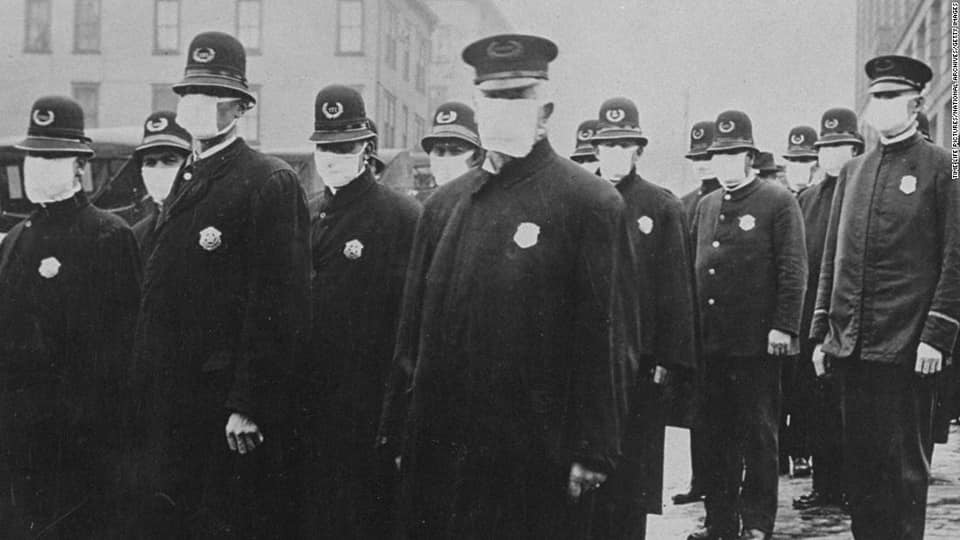On 11 March 1918, Private Albert Gitchell became the first documented case of Spanish Influenza [‘Spanish Flu’]. The US Army cook reported symptoms of a “bad cold”. He was soon followed by Corporel L. Drake. By noon of the same day, the camp surgeon had seen over 100 men displaying the same symptoms. The outbreak went on to spread globally, infecting some 400 million (estimated), at a time when the world was in the final stages of the First World War and the early phases of post-war recovery.

Spread of Spanish Influenza
The infection had taken hold and spread quite quickly within the confined space offered by army camps. That same army were America’s ‘Dough Boys’ and in March 1918 some 84000 sailed to Europe, 118000 in April. The US 15th Cavalry had 36 cases, 6 dead, whilst crossing the Atlantic.
By May the virus, aided by troop movement, was firmly established in both North America and Europe. It was an indiscriminate killer, claiming lives in many countries and people from all sectors of society. The impact on the war effort too was great. Planned operations were postponed to a lack of healthy men.
Notes:
Gitchell’s temperature was recorded at 103 degrees Fahrenheit. (39.4 Celsius)
Soldiers displaying symptoms were placed in isolation tents if in camp. In transit, isolation was harder to implement.
By lunch of 11th March 100 cases were recorded. By the 18th the number of cases was 500. The camp recorded 1100 cases in total. 48 of these men died.
Most men recovered after 3/4 days.
Gitchell recovered from Spanish Flu and also survived the war. Globally Spanish Flu (H1N1) claimed at least 50 million lives, possibly as high as 100 million.
An estimated 400 million people were infected. 25% of US Citizens were infected.
US deaths totalled 675000.UK deaths were 228000.
Spanish Flu caused 182 times as many deaths as would be expected from ‘normal’ influenza, based on international statistics. Mask wearing was compulsory in some places. An anti-mask league emerged in protest.
The First World War – Medicine Through Time
External Links
National Archives (United States) – The Influenza epidemic of 1918
BBC Bitesize – educational page from the BBC covering the impact of Spanish Influenza on the United Kingdom.
Red Cross -‘Spanish flu’: The British Red Cross’ work in the face of a global pandemic.
Leave a Reply
You must be logged in to post a comment.